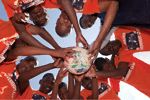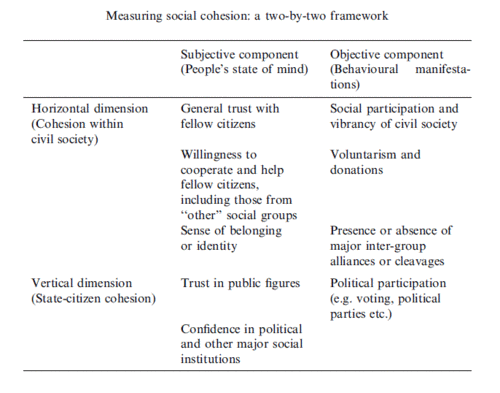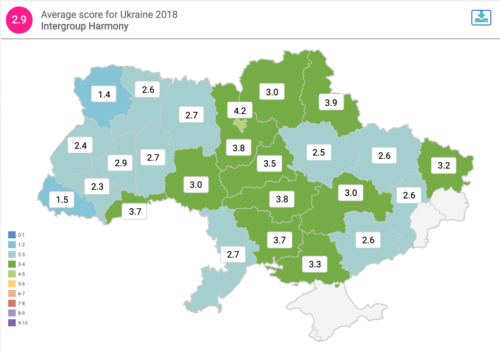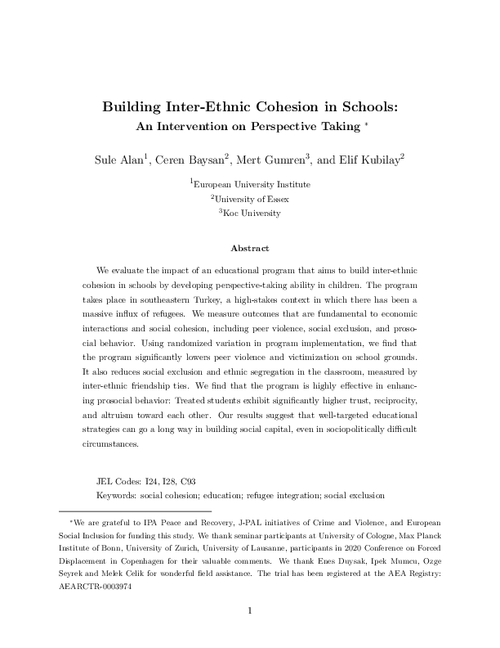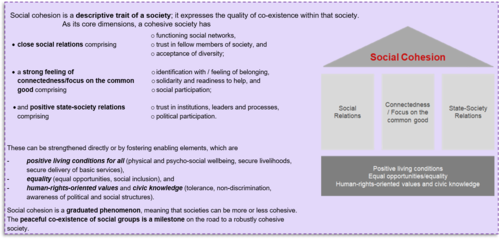Back to Results
Social Cohesion through Sport
Key facts
Geographical focus
Europe and Central Asia
Sub-Saharan Africa
Middle East and North Africa
Sub-Saharan Africa
Middle East and North Africa
Implementation period
2019 - 2022
Implementing agency
GIZ
Commissioned by
Federal Ministry of Economic Cooperation and Development
Main thematic areas
Conflict & peacebuilding
Social protection
Education
Health
Flight & migration
Youth
Social protection
Education
Health
Flight & migration
Youth
Organisation

Overview
Sport and physical education can promote and strengthen social cohesion by providing a playground for enjoying physical activities together with people from various social and cultural backgrounds. In this context, sport can also make valuable contributions to reconciliation and intercultural learning. Sport can contribute by building core competences on an individual level while fostering social inclusion and social capital on a community level.
Concept of social cohesion
Project Context
- The Sport for Development (S4D) approach is a recognized tool to reach vulnerable groups (children and youth; marginalized people, girls and young women) and has been used by German Development Cooperation in 38 countries, many of which are facing major socio-economic crises due to violent conflicts, natural disasters, and human rights abuses displacing millions of people.
- In East Africa and the Horn of Africa, disasters (droughts, flooding) and violent conflicts force millions of people to seek refuge in neighbouring countries like Kenya and Ethiopia.
- The multi-ethnic, post-conflict societies of the Western Balkans require support in improving neighbouring relations.
- Displacement due to war and conflict in Colombia and the region resulted in many refugees and wide-spread violence.
- In Jordan and Iraq more than 900,000 Syrian refugees were registered and more than three million people in Iraq are internally displaced.
Objective
- The goal of the project is to promote peace and security: through Sport for Development, the project promotes tolerance, inclusion reconciliation, and the agreement of and compliance with rules. Conflict management and violence prevention are further key issues that will help to achieve social cohesion, particularly in relation to host communities in the context of displacement and migration.
- When taught in a pedagogically valuable way, children and youth learn fundamental principles such as tolerance, solidarity, cooperation and mutual respect. Furthermore, it fosters self-confidence and promotes communication competences which are important to resolve conflicts non-violently and peacefully exchange views. Empowering relationships and networks, sport activities can contribute to a greater sense of identity and feeling of belonging, which can lead to an active citizenship outside of the sporting environment.
Approach
- S4D uses sport, physical education and physical activity intentionally to pursue non-sporting development outcomes following a rights-based approach while embracing diversity. The United Nations recognize sport as an enabler of sustainable development and ‘as a means to promote education, health, development and peace’.
- Sport is a social experience and when taught in an educational and context-sensitive manner, sport and physical activity teach life skills and values such as tolerance, respect, non-discrimination and gender equality, improve ways to resolve conflicts peacefully and foster social relations and solidarity.
- Sport creates a safe and neutral space in which individuals – regardless of age, gender, ability or belief – from different backgrounds can come together in a harmfree environment which promotes fun and enjoyment. Through this, participants can interact with each other, learn from one another and build mutual trust. Sport boosts self-confidence, improves the mental and psychosocial well-being, helps to reduce stress and supports recovery from traumatic experiences and anxiety. A special focus on children and youth, who act as communicators and mediators, can achieve a long-lasting impact on societies.
Achievements and Impacts
- S4D contributes to tolerance, anti-discrimination and conflict resolution by teaching children and youth to apply these concepts on and off the field. S4D improves social relations by offering different forms of communication and interaction: “Football is important as it brings interaction and unity amongst communities living in the camp and with the host community, fostering cohesion.” (Carlos Gatlliah, S4D Coach and youth leader, South-Sudanese Refugee, Kakuma, Kenya).
- The S4D methodology is integrated in partner organizations and GIZ programmes as an effective tool to foster social cohesion. S4D coaches and participants are role models in society and become agents for change: “I quickly recognized the enormous potential of the project concept. The idea of specifically combining professional football training with personal development is new to Jordan. And it’s much more fun working with children in this way and watching them develop, regardless of their nationality, age or gender. As coach, I’m also learning a lot about my function as a role model for the kids – both on and off the pitch.” (S4D Coach and national player Maryana Haddad, Jordan).
- The GIZ sport for development projects take place in 38 countries, educated 8200 multipliers, and reached out to 1,5 million children and youth.
Lessons Learnt and Recommendations
- Apply context-sensitive planning and implementation, following the do-no harm approach and safeguarding in sports principles.
- Apply a rights-based approach ensuring participation of all in a harm-free and enjoyable environment.
- Include participants in planning and implementation phases involving affected communities alike (refugees, internally displaced persons, voluntary returnees and host communities)
- Involve governments, civil society, private sector and affected communities for a multi-agency approach.
- Establish close links with academia to develop approaches based on existing research and experiences.
- Develop joint standards for programming, monitoring and evaluation in order to make results comparable.
How we measure
- The overall aim is to measure the contribution of S4D to different SDGs.
- The S4D Impact Indicator Frameworks allow for a systematic and specific approach to measure the contribution of S4D to the SDGs. They are based on the competences that children and youth gain in different SDG-related areas.
- Quantitative data on participants and multipliers is collected and monitored.
- Pre- and post-questionnaires, coach mentoring and follow-ups are used in coach education to measure knowledge, competencies, applicability and satisfaction.
- Impact studies measure the effect S4D has on the target group, as implemented in Colombia and the Western Balkans
Link to project homepage
